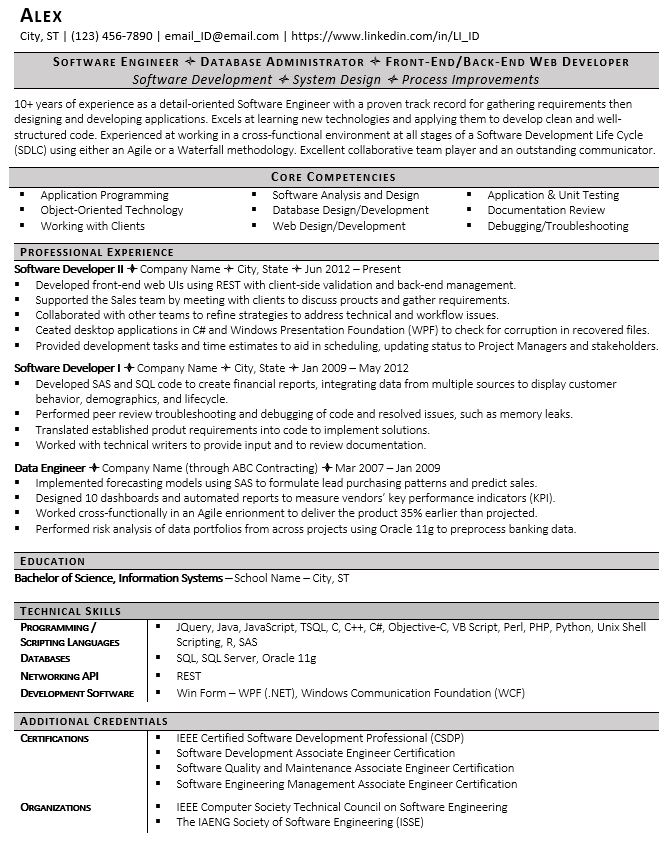Fixing Bad Resumes: 7 Key Improvements

Learn how to fix bad resumes in this quick and easy guide!
Is your resume failing to land you job interviews? When you try to write a resume from scratch, there are countless pitfalls you will come up against. Even job seekers who use templates can sometimes fail to make the right impression. The good news is that most bad resumes tend to share some similar failings. In the following guide, we will look at how to fix bad resumes and the mistakes you may be missing.
Bad resume example
Before we get started, let’s take a look at how a bad resume looks. The below example shows exactly what you should not do when it comes to creating your next application:

What makes a bad resume? 7 key improvements
Can you spot the common mistakes in the above example? If not, we have the answers that you have been looking for. To help you learn how to fix bad resumes, we will be looking at each of the errors in turn. Here are the seven core things that make the above example poor.
1. Ditch the ‘objective statement’
Problem: Objective statements are old-hat
In our bad resume example, you’ll notice that the job-seeker included an objective statement. In times past, the objective section was a traditional option in most resumes. Here’s how it looks:
“Looking to obtain a position as a software engineer and apply my many years of experience and skills.”
The statement succinctly conveys your career goals, and lets any prospective employer or hiring manager know that you’re serious about the job. On the surface, that seems like an important thing to do, but experts now agree that the objective is outdated in the modern era.
Including this blurb on your resume is a quick way to show the hiring manager that you are out of touch. It proves to them that you don’t know what the current hiring expectations are.
Solution: Use a summary instead
So, what should you do instead of using an objective? Use a summary statement to better represent who you are, what you’ve accomplished, and how you can benefit the prospective employer if you’re hired. The difference in presentation can be truly dramatic, since it allows you to focus on your value as an employee rather than on what you want from the company.
In short, it means that you put yourself in the hiring manager’s shoes and understand what they want from you as a candidate. You can then write a summary that meets their needs. Here is an example of a resume summary instead:
“10+ years of experience as a detail-oriented Software Engineer with a proven track record for gathering requirements then designing and developing applications. Excels at learning new technologies and applying them to develop clean and well-structured code. Excellent collaborative team player and an outstanding communicator.”
The summary enables you to provide a quick and concise overview of your employment history. You can use it to highlight your achievements, define special skills, and demonstrate your value.
Use the summary to focus on the benefits you can provide for the employer rather than what you hope to gain from the relationship. Check out our post on writing a resume summary here.
2. Shake up the work experience section
Problem: The work experience section is dull
If you carefully examine the work experience section of the bad resume template example, you may notice that it’s somewhat underwhelming. Yes, it meticulously lists the candidate’s positions and duties – but it seems to be missing something.
It’s missing any real achievements that can catch a hiring manager’s eye. It reads like a dull recitation of facts, and lacks the type of context that today’s potential employers and hiring managers are seeking.
There are few, if any, power verbs used in this laundry list of jobs held, and no metrics by which this candidate’s potential value can be assessed.
Solution: Define your achievements and add some detail
One of the major problems with this work experience section in the example is that it reads like a list. You have the unique opportunity to create an engaging section that details your biggest achievements to date. Don’t waste that chance. Make sure that you are specific in this part.
You don’t want to make it sound as though you simply did the basic tasks of your role. That is a foundation requirement. So, for example, you should not write the following:
“Developed sales plan using new and existing resources.”
This approach doesn't show what impact your work had on the greater business. In essence, it gives the hiring manager no clue about your value. Instead, use tangible results in your work experience section. Wherever possible, you want to quantify your accomplishments. Let’s take a look at how you can add something extra to the above statement:
“Created dynamic sales strategy that boosted quarterly sales activity by 17%, increasing division profits by 12.6%.”
The additional specificity showcases the types of results that any new employer can expect if they hire you. If in doubt, you can always use the STAR method when writing these points.
3. It fails to showcase any skills
Problem: There is no skills or core competencies section
The bad resume example doesn’t have a skills section or, indeed, a core competencies section. This is a standard part of modern-day applications. The fact that this one is lacking will make it stand out like a sore thumb. When laying out your resume, you need to make sure that you include all of the sections that the hiring manager expects from you.
Additionally, the core competencies section showcases what you bring to the table. At a glance, the hiring manager will be able to see whether the skills that you have match the job criteria.
Expert Tip
Add some keywords!
This resume also lacks the proper keywords needed to get past an Applicant Tracking System, or ATS. Most companies use an ATS to automatically screen your resume and one of the major things it looks for are keywords that relate to the position/industry.
An average of 75% of resumes are automatically rejected by an ATS so you want to ensure you have the right keywords to let the software know that you're a match for the position.
Solution: Add a balanced skills section
A resume should have a list of relevant core competencies or skills. Not only does this allow you to easily insert relevant keywords and tailor them to each position you apply to, but it tells the hiring manager what they need to know about you as a candidate.
Go back to the original job advert if you are looking for some inspiration. More often than not, the hiring manager will list the core competencies in the job requirements. Select any that match your existing skill set and include them as bullet points. When we talk about how to fix bad resumes, a quick hack is to also include a healthy range of soft skills.
Example:

4. The language is unimaginative
Problem: The work experience section is boring
We already touched on this a bit, but it’s worth repeating: word choice matters. Your verbs should be active and powerful, and your adjectives should help to reinforce the importance of your prior job roles.
Don’t just describe yourself as being “responsible for” some activity; choose words that are more active and productive. Here are some bad examples of what you should not be writing:
“Responsible for meeting the January 2020 sales goal.”
“Led sales team in achieving January 2020 sales goal, increasing sales by 23%.”
“Represented the company at trade shows increasing the new customer base.”
The goal is to insert value wherever possible. You want that hiring manager to read your resume and think, “This candidate is a real go-getter. If they can provide our company with these kinds of benefits, it would be a mistake to pass on the opportunity!”
You’ll also notice that there are areas within that work experience section where the candidate does promote value. That’s commendable, but even those areas could use some tightening to make them more dynamic.
While benefits like increased accuracy and reduced overtime are impressive, those achievements would be even more impressive if they were backed up by statements defining the bottom line benefits they created for the employer.
Solution: Improve your writing style
When it comes to how to fix bad resumes, changing up your writing is the biggest improvement you can make. Your resume is a marketing material. As such, the language and tone that you use has to be persuasive and engaging. Let’s take a look at some good examples below:
“Took the lead as company trade show ambassador, enhancing new client acquisition by 15% over previous trade show outreach.”
“Spearheaded a new sales strategy and boosted ROI by 23% in Q4.”
5. There are avoidable mistakes in the resume
Problem: There are spelling and grammar errors
The bad resume example above has a spelling error, and even a single error is enough to get you disqualified. When the hiring manager reads a resume like this one, the mistake will jump off the page to them. It shows a lack of attention to detail. The hiring manager will instantly have a negative impression of you as a candidate and likely won’t want to interview you for the job.
Solution: Proofread, proofread, proofread
Always read your resume over and give it over to someone else to spell check and proofread as well. These seemingly small mistakes can make a major difference when you’re applying for jobs. You can also use a third-party spellchecker, such as Grammarly or the Hemingway App.
6. The resume is not attractive
Problem: The resume design is poor
Looks matter when it comes to good vs. bad resumes. The aesthetics in the example aren't really pleasing. Sure, the content is the most important part, but you want the hiring manager to read it in the first place. If your resume is unattractive, they might not bother to even do that.
Solution: Spend more time on the design
Hiring managers only spend a few seconds looking at your resume so you want to ensure your resume is neatly organized. Here are some of the ways you can fix bad resume designs:
Choose a clean and simple layout
Only use one (or, maybe, two) font types
Use plenty of white space around sections
Avoid fancy colors or charts on your resume
Create clear headers for different sections
Remember, your resume should not look like an art project. Instead, you need to make sure that it is easy for the hiring manager and ATS to read. Prioritize readability over everything else.
7. It’s a one-size-fits-all resume
Problem: The resume is not tailored
When we look at this bad resume example, one thing stands out. It’s a one-size-fits-all approach. There is nothing about this resume that suggests it has been tailored to meet the criteria of the job at hand. That means that it won’t impress the hiring manager at all.
Solution: Always tailor your resume
The fact is that you need to tailor your resume to have any real chance against other applicants.
This approach ensures that you are properly addressing a given company’s job requirements. This is also the best way to demonstrate that you’re the right person for the open position.
Do you need multiple versions of your resume? No – you can easily tailor your resume if it’s formatted properly. Take a look at this good resume example:

The takeaway
Learning how to fix bad resumes can be challenging. Chances are, you are not an expert resume writer and hitting the mark is tricky. In this guide, we have outlined some of the simple ways you can improve your next application. Take a look at your existing resume and see whether you have made any of the above mistakes. Dealing with them before you apply for any jobs is a simple way to increase your overall chances of success.
Want to gain the competitive edge? Let ZipJob’s professional resume writers take the lead. We can help you create an interview-winning resume in no time at all.

